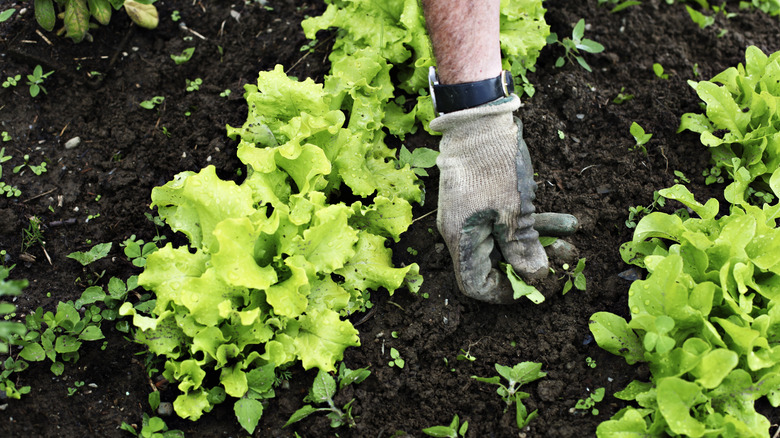What Is A Pre-Emergent And Why Should You Apply It To Your Lawn? Our Master Gardener Weighs In
Pesky weeds pop up in lawns and gardens throughout the year, but there is one way to prevent weed seeds from taking root. Spreading a natural or synthetic pre-emergent product in your outdoor spaces before those seeds start to sprout can save a lot of time and energy since you won't have as many weeds to pull. You also won't have to use as many herbicides to keep your spaces clear of unwanted weeds. Pre-emergent is not effective on existing weeds, so you will still have to deal with those, but it does keep new weeds to a minimum. Consistent use of one of these products for a few years will have a significant impact on the number of weeds you have to manage.
There are different types of pre-emergent to consider using in your lawn and garden. If you grow fruits and vegetables and like to keep your garden organic, corn gluten-based products are safe for people, plants, and wildlife. Preen is a popular brand of organic pre-emergents, but there are plenty of options from which to choose. If you are looking for something stronger for the lawn, synthetic products are scientifically developed for ultimate efficacy. Regardless of the kind of product you choose, always read the label carefully and take all necessary safety precautions.
When to spread pre-emergent
To prevent weeds year-round, you'll need to spread pre-emergent in late summer and fall before seeds have a chance to germinate. You can use the same product for every season since pre-emergents are indiscriminate –- they will prevent every kind of seed from sprouting. In the spring, if you are already seeing early weeds, you have waited too long. The same is true for climates where hardy weeds grow throughout the winter.
The kinds of weeds that will be affected by your application of pre-emergent depends on your region. For those in northern climates, early spring application will prevent cool weather plants like henbit, annual bluegrass, purple deadnettle, and chickweed. For those further south, these weeds germinate and grow all winter. Fall application of pre-emergent before the temperatures start to drop will keep those same weeds from growing. Applying in both seasons in any climate will help prevent warm-weather weeds like crabgrass, dandelions, spurge, and much more.
Where and when to avoid applying pre-emergent products
Of course, you do not want to deal with unwanted weeds anywhere, but there are some areas of your lawn and garden where pre-emergents will do more harm than good. We mentioned that these products are indiscriminate and will prevent any kind of seed from sprouting. This includes seeds you have intentionally planted. If you are overseeding your lawn to fill in bare spots, using a pre-emergent in the same area to prevent weeds will also make your grass seed ineffective.
Using a pre-emergent in a vegetable garden is a little more challenging because weed seeds often germinate in the same conditions your garden seeds require to sprout. For example, if you have battled henbit in the past and spread pre-emergent in early spring, and then try to start lettuce from seed, you'll end up with a garden full of nothing. In this case, removing the weeds by hand and then applying pre-emergent after all your seedlings have emerged is ideal. If you do not plan to start anything from seed in the late fall or winter, you can still apply one of these products to the garden to keep it weed-free throughout the cooler months so it's clear and ready to plant when spring rolls around.


